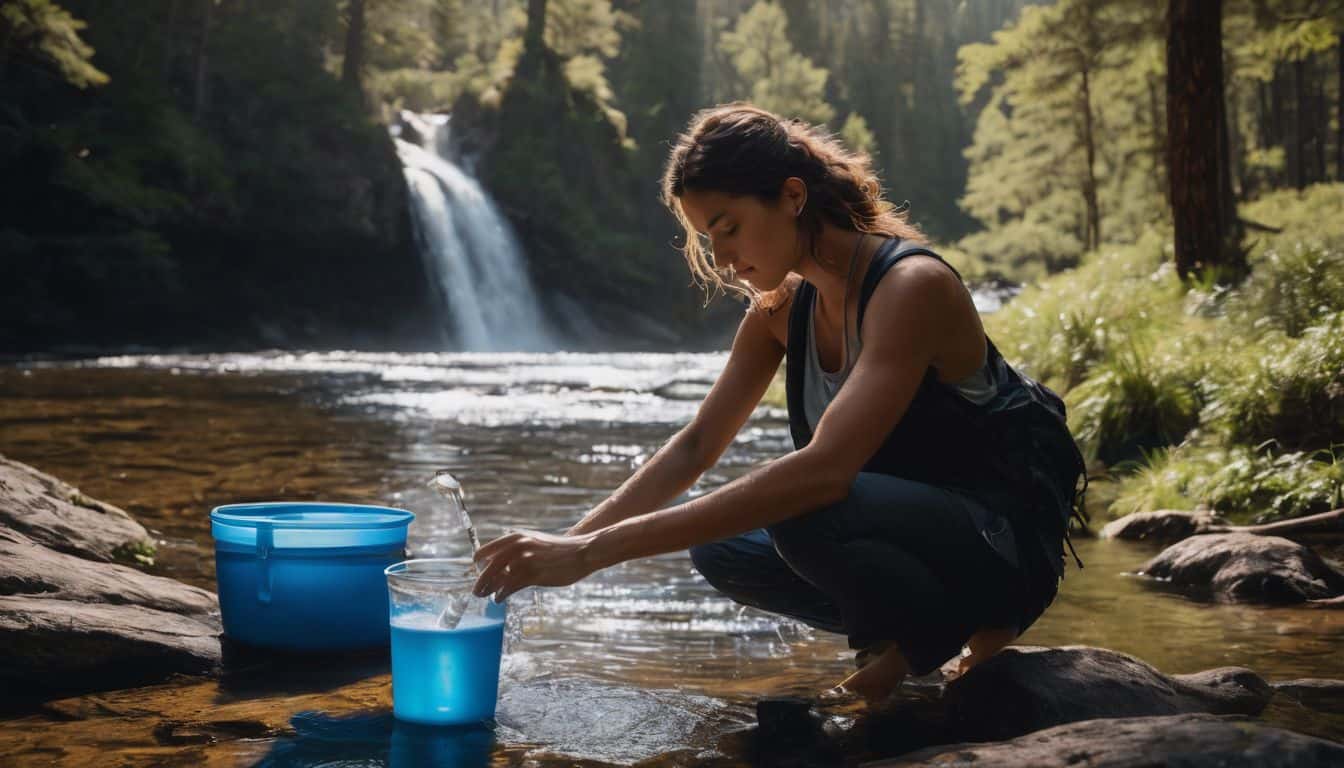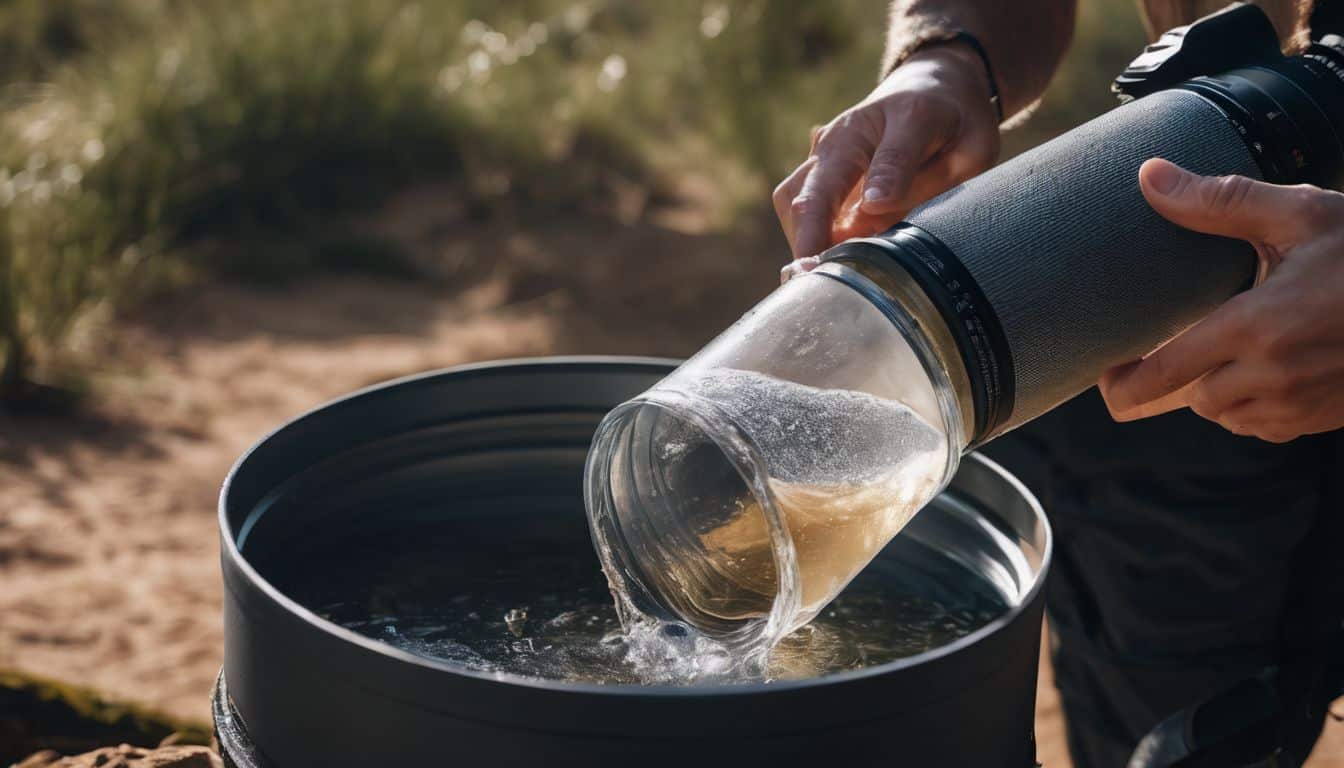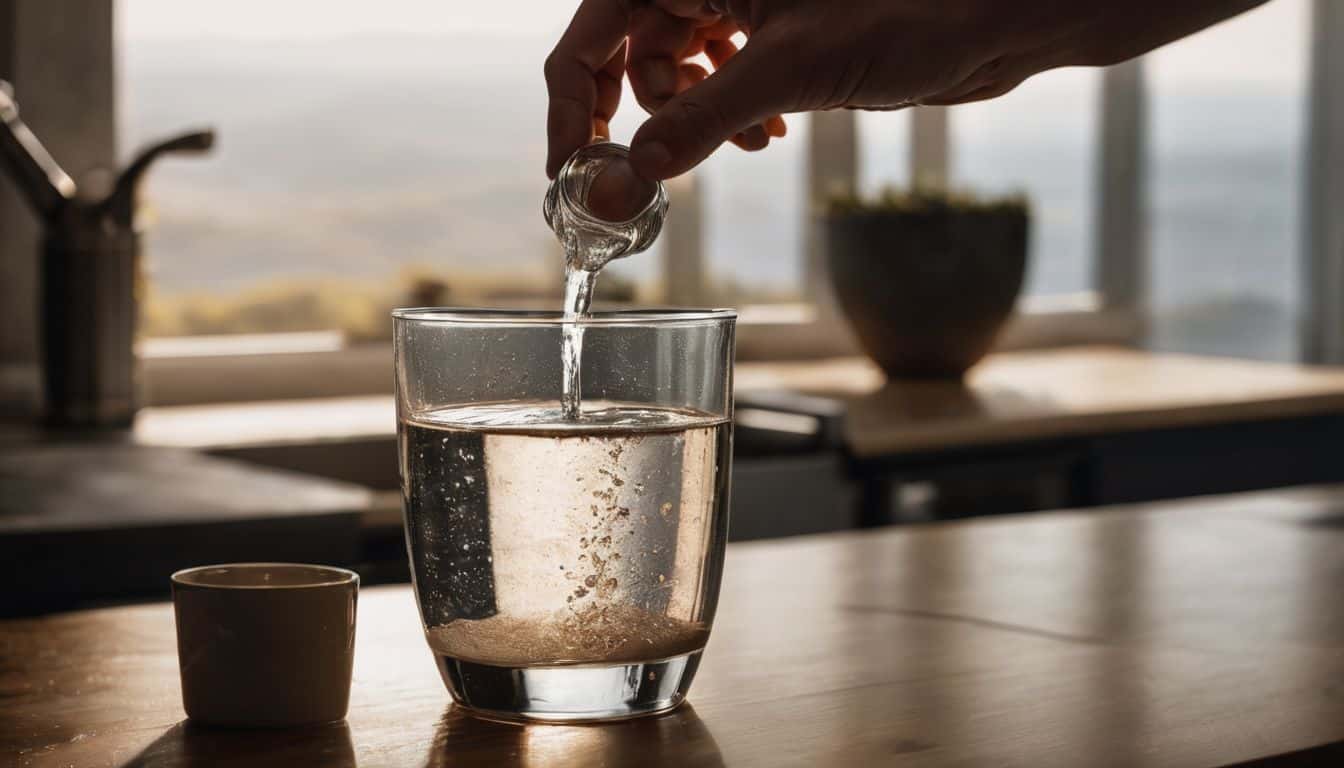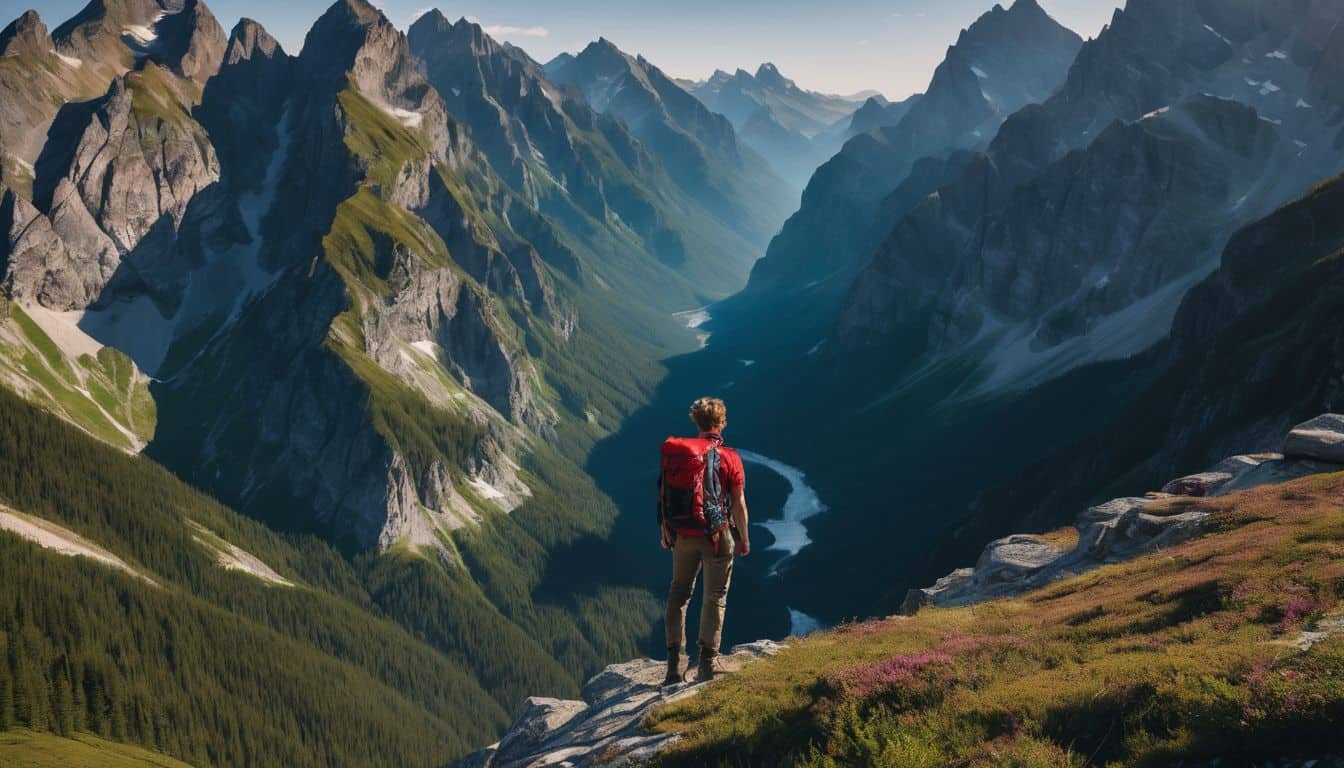Ever paused mid-sip and wondered what’s really floating around in your tap water? You’re not alone. Like you, the question of my drinking water’s quality and its influence on the health of my loved ones has sparked more than just concern.
It ignited a thirst to comprehend an invaluable lifeline — improvised water filtration systems. Together, we’ll explore five simple, yet powerful ways to purify our vital liquid nourishment right within our humble abodes.
So fill up that glass and come along for the splash – let’s dive into this refreshing journey!
Key Takeaways
- Improvised water filtration methods are essential for ensuring clean drinking water and preventing waterborne illnesses.
- Boiling water, using chlorine bleach, filtering with natural materials like sand and gravel, harnessing sunlight for purification, and using UV water purifiers are effective DIY methods for purifying water.
- Each method has its own benefits and limitations, so it’s important to choose the right method based on your situation.
- By learning and practicing these techniques, you can thrive even in challenging situations by having access to safe and clean drinking water.
The Importance of Water Filtration
Ensuring clean drinking water is crucial for maintaining good health and preventing waterborne illnesses. Improvised water filtration methods can help improve overall sanitation and hygiene in any situation.
Ensuring clean drinking water
Clean drinking water is a must for all of us. We need it to live and stay in good health. But, getting clean water can be hard at times. With a water filter, we can make dirty water safe to drink.
It takes out bad stuff that can make you sick or taste gross. Filters also help your money go farther because tap water costs way less than bottled water. Drinking filtered tap water keeps you healthy and saves you cash!
Preventing waterborne illnesses
Clean water is key for good health. It can stop you from getting sick from dirty water. There are many ways to make sure your water is clean. One of these ways is by using a water filter.
Waterborne illnesses come from bad things in the water. These bad things could be chemicals or germs. A good way to get rid of them is through filtration. Filtering your water takes out all the unhealthy stuff and leaves safe, clean drinking water behind.
Improving overall health and sanitation
Clean water is key to good health. It keeps us safe from diseases that can make us very sick. Filtration systems help get rid of bad stuff in our water like dirt, chemicals, and germs.
This makes the water safer for drinking and cooking. Clean water also helps to keep our homes clean and germ-free by getting rid of harmful bacteria or viruses during cleaning processes.
Staying protected from such bugs boosts our overall health big time! So, let’s embrace the magic of filtered water for a healthier life today!
Basics of Improvised Water Filtration

When it comes to improvised water filtration, there are a few basic things you need to know. Homemade filters can be made using materials like paper towels, kitchen rolls, or coffee filters.
These filters help remove dirt and sediment from dirty water. NASA/JPL Edu even has a student project where they create a water filter to clean dirty water samples. Each layer of a homemade filter has a specific purpose, such as using gravel or small stones to filter out large sediments and sand for finer filtration.
Water filtration science projects can teach us how different materials are filtered out of water and how we can create clean sources of drinking water. Improvised filtration systems offer benefits like improving the taste and smell of water, protecting the environment, and keeping contaminants at bay.
Output Length: 135 characters
DIY Water Filtration Methods
Learn how to purify water using common household items and natural materials like sand and gravel. Discover the simple steps to filtering water with chlorine bleach or harnessing sunlight for purification.
Find out more about these DIY water filtration techniques to ensure access to clean drinking water in any situation.
Boiling water
Boiling water is an important and easy way to purify your drinking water. It kills harmful bacteria and reduces the risk of getting sick from waterborne diseases. Boiling water doesn’t remove all impurities, but it helps treat some problems with the water.
For example, it can make well water drinkable and safe. After boiling, you can store the water in a clean container in the fridge for up to 72 hours before you should throw it away.
So remember, if you need to make sure your water is safe to drink, just boil it!
Using chlorine bleach
Chlorine bleach is a powerful tool for purifying water. It helps kill germs that can make you sick and improves the safety of the water you drink. By adding just a teaspoon of unscented chlorine bleach to your water, you can eliminate any lingering bacteria after filtering it.
This method is widely recommended by experts and has been proven to be effective in making water safe for consumption. Plus, when you use chlorine bleach, it also helps settle dirt and debris at the bottom of your container, improving the clarity of your water.
So if you’re looking for an easy way to disinfect your water in survival situations or emergencies, using chlorine bleach is definitely worth considering.
Filtering water with natural materials like sand and gravel
One effective DIY water filtration method is using natural materials like sand and gravel. These materials can help remove larger impurities from dirty water, such as dirt and sediment.
To create a homemade filter, layer cotton balls, charcoal, gravel, and sand in a container. Make sure to thoroughly wash the sand and gravel before use to ensure cleanliness. This eco-friendly solution can improve water quality by removing bacteria and other contaminants.
Using locally sourced materials like stones, gravel, and sand adds sustainability to the process. So if you find yourself in a survival situation or without access to clean drinking water, consider filtering water with natural materials like sand and gravel for a simple yet effective solution.
Using sunlight for purification
I love using sunlight for water purification because it’s an easy and sustainable way to get clean water off the grid. Solar-powered water filtration systems are designed to use solar energy to power the filtration process, making them a great option for survival situations or when you don’t have access to electricity.
Plus, with solar-powered purification, you can even purify saltwater in the wild! It’s all about harnessing the power of the sun to ensure we have clean and safe drinking water.
Using UV water purifiers
UV water purifiers are a great option for ensuring clean and safe drinking water in survival situations. These devices use ultraviolet light to disinfect and purify the water, eliminating up to 99.9% of harmful microorganisms.
One example of a UV water purification design is the Camelbak Bottle, which uses germicidal ultraviolet light to treat microbiologically unsafe water. It’s important to note that there may be concerns about potential side effects of UV-treated water, including the risk of cancer.
However, when used correctly and in moderation, UV water purifiers can be an effective tool for keeping your drinking water free from harmful pathogens.
Step-by-Step Instructions for Boiling Water
Boiling water is a simple and effective way to make sure it’s safe to drink, especially in emergency situations. Here’s how you can do it:
- Fill a pot with water from a clean source, making sure not to overfill it.
- Place the pot on a heat source, such as a stove or campfire.
- Turn on the heat and wait for the water to come to a rolling boil. This means that there are large bubbles rising and breaking on the surface of the water.
- Let the water continue boiling for at least one minute to ensure that any harmful bacteria or parasites are killed.
- After one minute, turn off the heat and let the water cool down before drinking or using it for cooking.

Step-by-Step Instructions for Using Chlorine Bleach
Here is a simple step-by-step guide on how to use chlorine bleach to purify water:
- Get regular, unscented chlorine bleach like Clorox or Purex.
- Remove any visible debris or suspended materials from the water.
- Calculate the amount of bleach needed based on the quantity of water you want to disinfect. You can use ratios or a bleach-to-water calculator for accuracy.
- Add the calculated amount of bleach to the water and mix it thoroughly.
- Let the mixture stand for at least 30 minutes to allow enough time for the chlorine to kill bacteria and microorganisms.
- After 30 minutes, check if there is a slight chlorine smell in the water. This indicates that it has been properly treated and is safe to drink.
- If there’s no noticeable chlorine smell, repeat steps 4 and 5 with a slightly higher amount of bleach until you can detect the scent.
- Once you’ve confirmed that the water has been treated, it is now ready for consumption or other uses.
Step-by-Step Instructions for Filtering Water with Natural Materials
Here’s how you can filter water using natural materials:
- Find a clean container to hold the dirty water.
- Collect sand and gravel from your surroundings.
- Layer the container with a thin cloth at the bottom.
- Add a layer of charcoal on top of the cloth.
- Layer sand and gravel on top of the charcoal.
- Pour the dirty water into the container slowly, allowing it to pass through the layers of materials.
- Collect the filtered water in a separate container.
Step-by-Step Instructions for Using Sunlight for Purification
Here’s how you can use sunlight to purify water:
- Find a clear plastic or glass container with a lid.
- Fill the container with water from a clean source, leaving some space at the top.
- Place the container in direct sunlight for at least 6 hours.
- Make sure the lid is tightly closed to prevent any contamination.
- After 6 hours, check if the water appears clear and free of particles.
- Carefully pour the purified water into a separate clean container, leaving any sediment behind.
- It’s important to note that this method may not remove all types of contaminants, such as chemicals or heavy metals. If you suspect your water contains these substances, consider using alternative filtration methods.
Step-by-Step Instructions for Using UV Water Purifiers
Using a UV water purifier is an effective way to treat unsafe water. Here’s how you can use it:
- Make sure your UV purifier is clean and functioning properly.
- Fill a clear container with the water you want to purify. Remember, UV light works best on clear water, so try to remove any sediment or particles beforehand if possible.
- Place the container under the UV lamp of the purifier. Ensure that the lamp is immersed in the water completely.
- Turn on the UV purifier and let it run for the recommended amount of time. This can vary depending on the manufacturer and the volume of water being treated, so refer to the instructions provided.
- While the purifier is running, avoid exposing your eyes or skin directly to the UV light, as it can be harmful.
- After the recommended time has passed, turn off the purifier and carefully remove the container from under the lamp.
- The treated water is now ready to drink or use for other purposes.
Expert Tips and FAQs
– Choose the right filtration method based on your specific situation and needs.
– Regularly clean and maintain your filtration system to ensure its effectiveness.
– Understand the limitations of each method, such as their ability to remove certain contaminants or handle large volumes of water.
– Keep in mind that improvised water filtration methods may not always be suitable for long-term use or in extreme situations.
– FAQs:
– How long does it take to boil water for purification? Generally, bringing water to a rolling boil for one minute is sufficient to kill most types of pathogens.
– Can I use any type of chlorine bleach for disinfecting water? It is recommended to use unscented bleach that contains 5.25% – 6% sodium hypochlorite as an active ingredient.
– How often should I replace the charcoal/sand in my homemade filter? It depends on the frequency of usage and the quality of water being filtered. Inspect regularly and replace when necessary.
Choosing the right filtration method for different situations
As a survival enthusiast, it’s essential to know how to choose the right filtration method for different situations. When it comes to improvised water filtration, there are various methods you can use depending on your needs.
For example, if you’re at home, you might consider a whole house water filter system or a portable water filtration system for when you’re on the go. It’s important to understand that the size and type of business also play a role in determining the best water filtration system for commercial purposes.
Additionally, keep in mind the contaminants you want to filter out and look for drinking water purification methods that specifically target those substances. By considering these factors and understanding your specific requirements, you can select the most suitable filtration method for any situation.
Ensuring proper maintenance and cleaning of filtration systems
Regular maintenance and cleaning of water filtration systems is crucial to ensure their optimal performance and longevity. By taking the time to clean and maintain your filtration system, you can prevent mineral and dirt accumulation in the filter, which can lead to clogging and reduced filtration efficiency.
It is recommended by manufacturers to clean the inside of a whole home water filtration system at least every two months.
Proper upkeep involves following a regular cleaning routine for your water filters. This includes disassembling the unit if necessary, removing any debris or sediment that may have collected, and thoroughly rinsing all components before reassembling them.
Additionally, you should check for any signs of wear or damage during the cleaning process so that you can address them promptly.
By scheduling regular maintenance sessions and implementing preventative measures, such as using pre-filters or sediment traps, you can further enhance the lifespan of your water filtration system.
Preventing contaminants and debris buildup not only ensures cleaner drinking water but also reduces strain on the filter itself.
Understanding the limitations of each method
Different water filtration methods have their own limitations. It’s important to know these limitations so you can choose the right method for each situation. For example, boiling water is effective at killing bacteria and viruses, but it doesn’t remove chemicals or other contaminants.
Using chlorine bleach can kill harmful organisms, but it may not be safe to drink in large quantities. Filtering water with natural materials like sand and gravel can remove larger particles, but it may not be able to remove all types of bacteria or viruses.
Using sunlight for purification works best in clear plastic bottles and may take longer on cloudy days. UV water purifiers are effective against many microorganisms, but they require batteries or electricity to work.
Conclusion on Improvised Water Filtration
In conclusion, by learning a few simple techniques for improvised water filtration, you can thrive even in challenging situations. Whether it’s boiling water, using chlorine bleach, or filtering with natural materials like sand and gravel, these methods can help ensure clean drinking water and prevent waterborne illnesses.
Remember to choose the right method for your situation and understand their limitations. Stay safe and hydrated!
FAQs on Improvised Water Filtration
1. Can I use household items to filter water in an emergency situation?
Yes, you can use various household items like cloth, sand, grass, and charcoal to filter water in an emergency and make it safer for drinking.
2. How do I create a basic water filtration system using available materials?
To create a basic water filtration system, you can layer clean cloth or paper towel on top of gravel and then cover it with fine sand. Pour the dirty water through this layered setup to filter out impurities.
3. Are improvised water filtration methods effective in removing all contaminants?
Improvised water filtration methods can remove larger particles and some bacteria but may not eliminate all contaminants such as viruses or chemicals. It is best to boil the filtered water before consuming it for further safety.
4. What are some natural materials that can be used for filtering water?
Natural materials such as moss, grass, bark, or even tree branches with small leaves can be used as filters to strain out larger particles from the contaminated source of water.
5. Are there any precautions I should take when using improvised filtration methods?
It is important to remember that improvised filtration methods are meant for emergencies only and may not provide complete purification. Always try to find a reliable source of clean drinking-water if possible and consult official guidelines during emergencies.





Leave a Reply